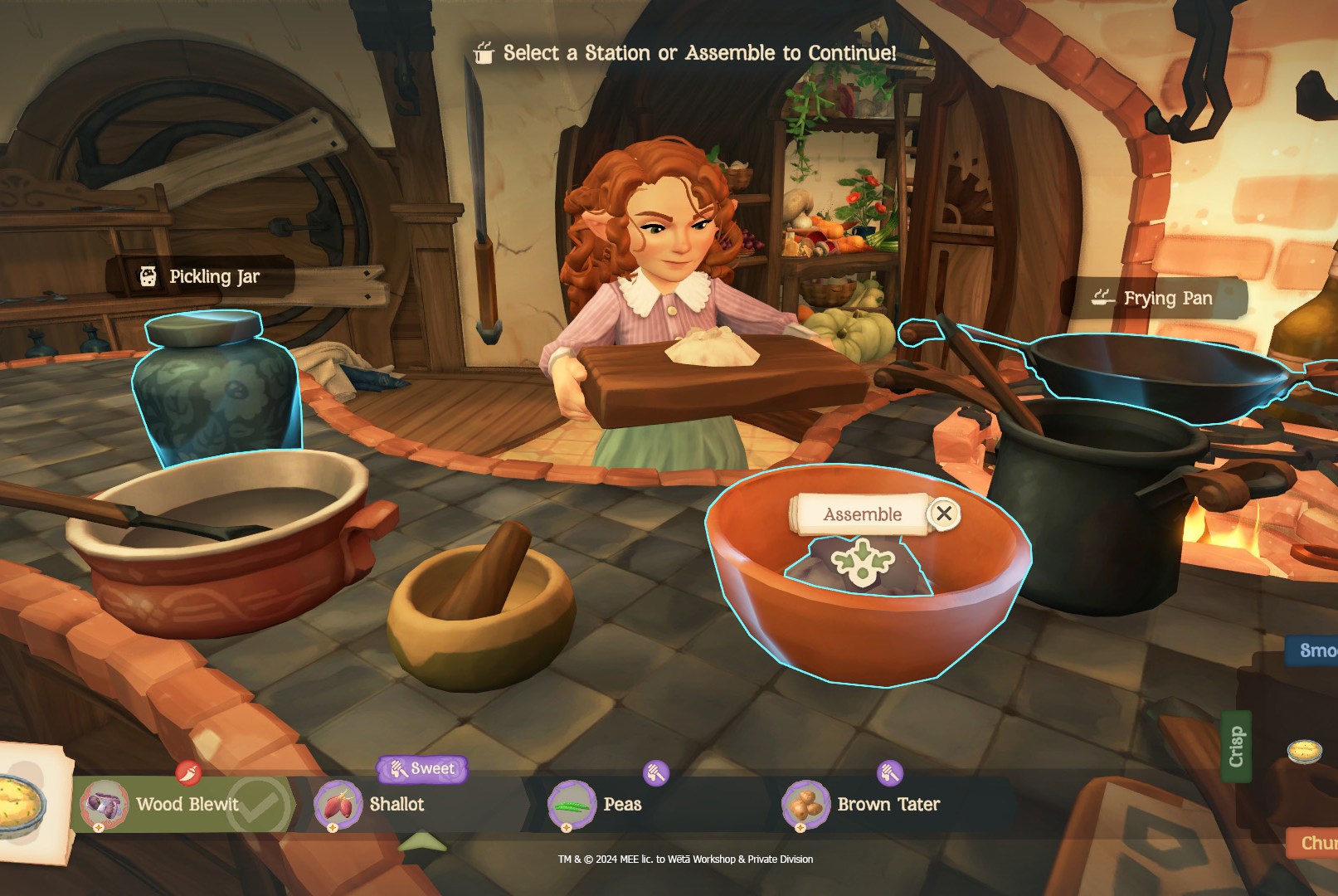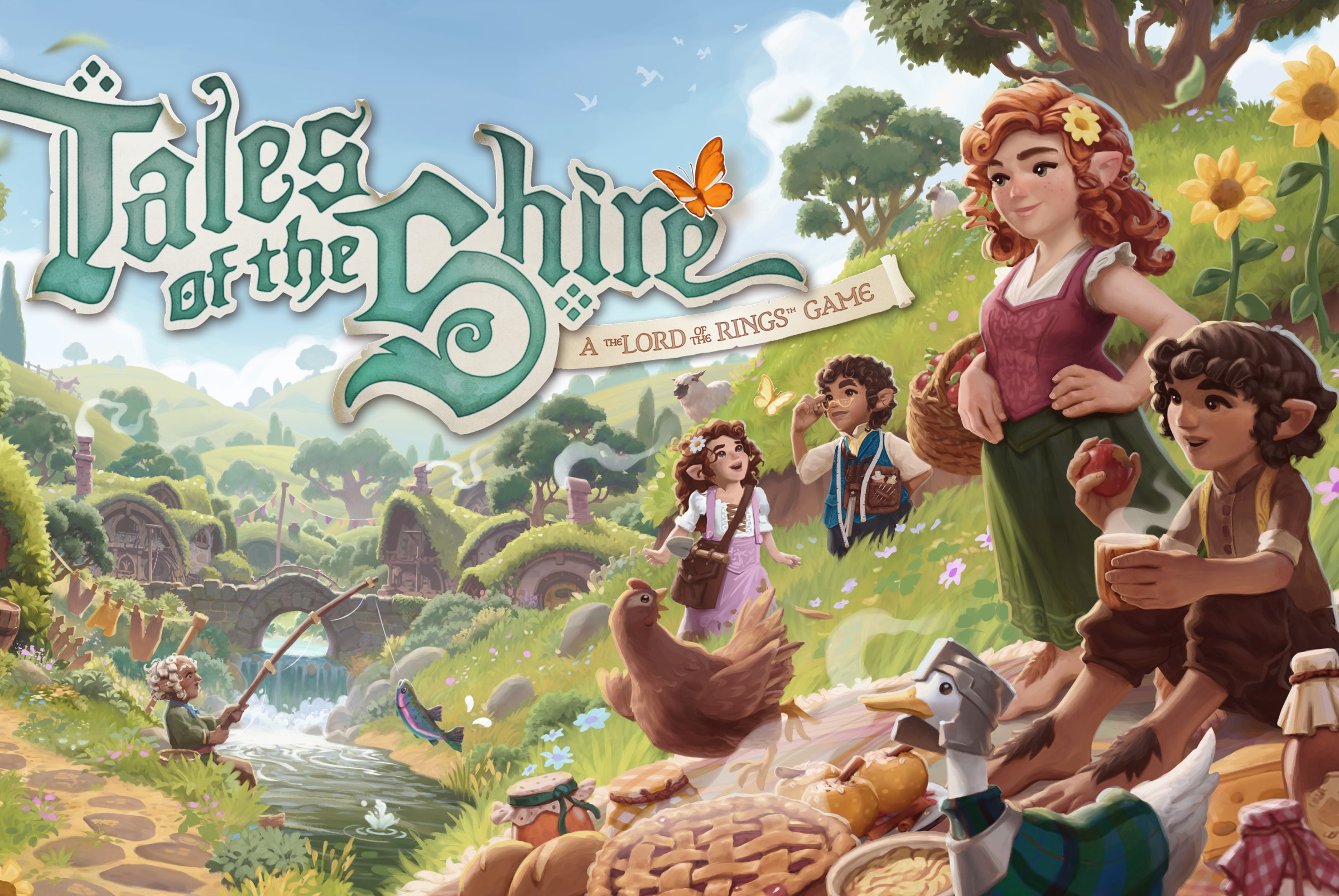We got a peek at the cozy Hobbit life simulation game and it understands the damn short
We live in the midst of a glut of Middle-earth media. Last year’s miserable Gollum game, the apparent Gollum of 2026 duology, The Rings of Powerthe elf kings, War of the Rohirrim‘s horse girls, and there are said to be more video games of varying sizes and topics in the works.
And yet none of the above delivers the one thing I really want to see from a Tolkien adaptation: Something with a completely different aesthetic and tone than Peter Jackson’s 2001 film trilogy. Middle-earth contains more multitudes than those three films could fit into, and it’s a shame that the setting has been coopted by their success.
But this week I got to talk to the best, fresh take on a Lord of the Rings film adaptation I’ve ever seen: Tales of the Shire: A Lord of the Rings game. ToTS is the first project from Rings film series veteran game studio Wētā Workshop, and is made in collaboration with Private Division. From what I was able to play of this long-awaited “cozy hobbit life” simulator, the studio has a winner on its hands.
Back in April, the game’s first full trailer promised friendship mechanics, cooking, fishing, house decoration, farming, seasonal changes, and other staples of the life sim genre. The demo Polygon got to play this week included Stories of the Gouwthe first few day/night cycles of ‘, in which the player takes on the role of a new hobbit in the village of Bywater, which is located a few days’ walk from both Hobbiton (home of Bilbo and Frodo) and the human town of Bree (home to the Prancing Pony Inn).
My three hour Stories of the Gouw were played on PC, though I also experimented a bit by streaming it to my Steam Deck, where the controls were even more intuitive than with keyboard and mouse. After firing up the demo on Steam, I opened up the list of achievements for fun. Right at the top was one for owning at least three vests.
I immediately took this as a good omen.
After a brief opening scene, I was presented with a delightfully robust character creator, with an unexpectedly forward-thinking five-point gender slider (on one end, waists were tiny and cleavage was noticeable; on the other, it was, well, so-so), as well as the completely unique option to customize my character’s foot hair.
Players can type in their own first and last names, but they also have the option of choosing from two extensive lists of names that appear to have been directly stolen from hobbits mentioned in Tolkien’s work. That is, I didn’t check everything against the books, but I was able to scroll through the list and give my hobbit the exact canonical first name I wanted: that of one of Bilbo’s uncles, Polo Baggins. This wasn’t just a good omen; it was a princely gift.
Stories of the Gouw provides a clear and direct insight into the duality of Tolkien’s hobbits—they have a great capacity for loyalty, sincerity, bravery, and toughness, made all the more surprising by their more observable capacity for pettiness, conservatism, and frivolity. One of the first things you learn from Orlo Proudfoot, the hobbit who welcomes you to Bywater, is that while grown-ups settle their differences with swords and arrows, hobbits do so by inviting people over for home-cooked meals. The comparison in the first reference to ToTS‘A very relaxed cooking and meal mechanic for combat gave it a passive-aggressive framework that immediately tied in with Tolkien’s hobbits.
For example, I had a good laugh when I realized that my first extended mission was to help a down-to-earth farmer win an argument with the arrogant miller over a completely unimportant local detail. About Godme and Farmer Cotton went to rub it in Sandyman the miller’s face. His son is a cowardly little employee anyway.
But, as a case in point: though you didn’t know her, you inherit your home from a beloved old hobbit lady who recently passed away, and an early quest has you inviting two of her former students to dinner, giving them fresh, happy memories in a place that was recently filled with sadness. There’s a nice sense of history to Bywater, conveyed in bits and pieces of conversation, and the game wants you to think about how you fit into it.
When preparing the dishes for that meal, it was already clear that this would be a satisfying loop. Invite your guests, wake up on the day of the event, see what they crave from the game menu, choose your recipes, and gather your ingredients (options available in the demo included fishing, foraging, and gardening). By the way, your pantry visually fills up with the specific food you put in it. If you save a tomato, the tomato basket fills up. If you save some mustard, there will be mustard in the place on the table where the mustard goes. It’s incredibly charming.
Then you start cooking: choosing ingredients will determine stats like Flavors and Deliciousness, but the cooking minigame lets you tweak for the ideal texture, using all the tools available in your kitchen (in this demo, only the cutting board and the frying pan). Then you receive your guests, arrange the 3D objects of your finished dishes on the table, and collect the rewards of “Fellowship” points, gifts, and story progression.
The few in-game days I spent with the demo were enough to get tantalizingly close to achieving my first major plot goal (hosting enough brunches with my neighbors to be accepted as a Bywater “local”), but not to achieving it. And reader, I’m languishing. I’ve sent out lunch invitations, and now I can’t keep them.
I’d say most of my time in the game was spent looking for NPCs to talk to rather than purposely gathering ingredients, repairing/decorating my somewhat run-down home, or cooking; there were plenty of tutorial missions to complete. And while the landscape extreme charming, I could imagine that all that walking around would become a bit monotonous after a while.
But on the other hand, my walks were marked by alertness: keep an eye out for butterflies, because following them will reveal ingredients for a meal you can forage. Check that pond for eddies in the water to stock up on fish. Keep an eye out for the blue birds with fanned-out red tail feathers that serve as the game’s wayfinding system. That is, you mark a destination on your map, and instead of a glowing path in the UI, there are just… helpful birds that fly down at each intersection of paths, pointing you in the direction you need to go. Buzzing.
I’ve noticed the occasional visual glitch here and there – hobbits sitting next to benches instead of on them, a strange young man shuffling along on his sitting legs instead of walking – but Wētā has six months to fix the problems. Private Division and Wētā Workshop have adjusted the game’s release date from 2024 to March 25, 2025. “Ha ha, NERDS,” I nerdily laughed when I read that, because I happen to know by heart that March 25 is the day, according to the Shire Calendar’s calculations, that the One Ring was thrown into Mount Doom and destroyed.
As Gandalf once said of hobbits, “You can learn all about their ways in a month, and yet after a hundred years they can still surprise you when the chips are down.” Given how expertly Wētā seems to understand the cozy mandate of hobbit life, I suspect there’s much more to discover here.
Tales of the Shire: A Lord of The Rings game will be released on March 25, 2025 for Nintendo Switch, PlayStation 5, Windows PC, Xbox Series X, and Netflix Games.


